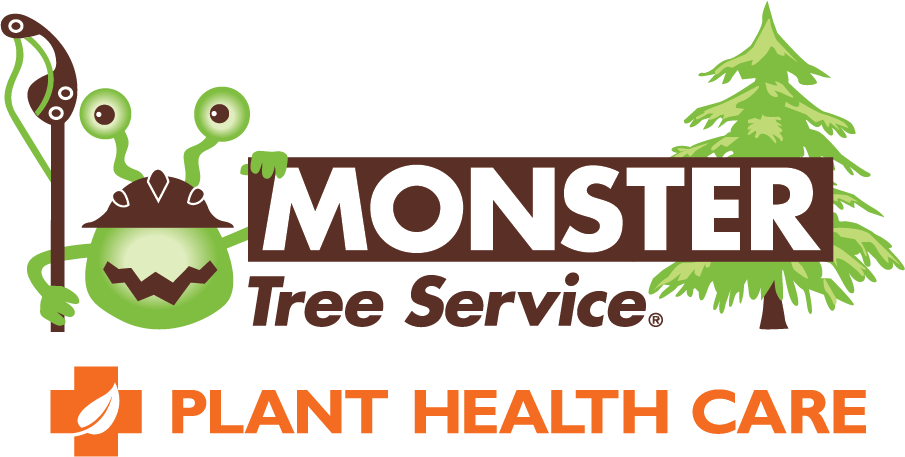
Winter Tree Work: Access, Protection, Pruning
It has been a busy few winter months for us here at Monster Tree Service, as we've been hard at work maintaining the beauty and health of the trees in our area. Winter brings its own set of challenges and opportunities for tree care. We want to take the time to share with you how we adapt our work during the colder season. There are certain projects that we purposefully deferred until winter for a variety of reasons, including access issues, specific job functionality and pruning objectives, and fulfilling Department of Environmental Conservation (DEC) regulations. So, let's delve into our winter tree work practices and share our approach in meeting the needs of both our valued customers and their trees.
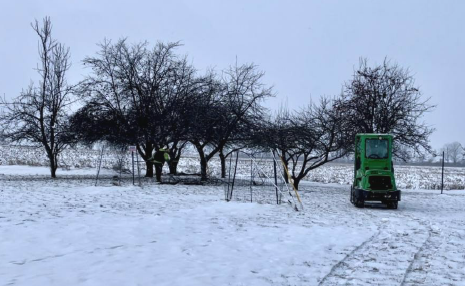
This pruning objective and the frozen ground made this an ideal
project to be completed in the winter.
Access: Partially or fully frozen ground conditions during winter Tree Highlight Eastern white pine (Pinus strobus) Also called: White pine, Northern white pine, soft pine Lifespan: These pines can live 200 years or more! ID features: Height- They typically grow 60- 80 [some can reach over 100!] feet in height and 20-40 wide when mature. can provide us with better access to the trees, especially when the ground is normally wet or soft in the warmer months. We prefer to have our equipment move across firm ground which minimizes the risk of our equipment leaving deep ruts or making a muddy mess in your yard. Overall, the firmness of frozen ground not only creates a safer work environment for our team, but also keeps our team working efficiently, and helps protect your property.
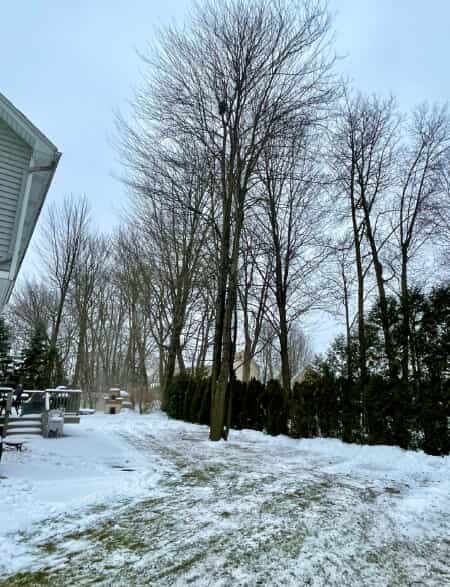
On this job, the crew cleared the snow out of the work zone so
they could properly assess the ground conditions, create a safe
area to conduct work, and do a more thorough cleanup.
Protection: Our arborists conduct an inspection of the property before starting work to identify potential hazards. They will also develop a plan that will have minimal impact on the property. This inspection involves evaluating whether the ground is sufficiently frozen and solid enough to safely maneuver equipment without causing damage. If the ground does not meet the criteria for safe access, we lay down ground protection mats designed for our equipment and to protect against damage. When working in areas with snow, or team may push or move the snow outside the work zone. This allows the crew to accurately assess the lawn and visualize any buried hardscape features.
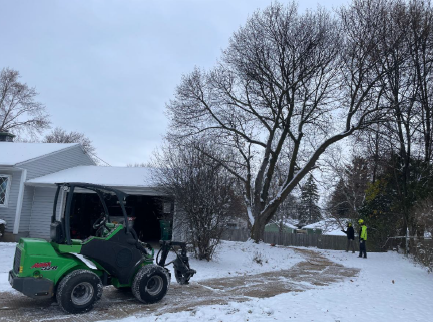
Our teams will build a road using ground protection mats when the ground is still soft or when multiple trips with machinery over the lawn is required.
Pruning: Pruning in the Winter presents an opportune time to meet certain pruning objectives. For example, winter is the ideal time to prune some types of fruit trees. Dormant season allows for precise shaping of the while also boosting fruit production. Another example is practice of only pruning Oak trees in the winter to protect the tree from becoming infected with the Oak Wilt disease, which is one of the most destructive tree diseases in the US. We strictly follow the New York State Department of Environmental Conservation (NYS DEC) requirements for oak wilt prevention.
One of the other benefits of pruning in the wintertime is that it is easier for our arborists to observe the tree's overall structure and identify, as well as address weaknesses in the structure.
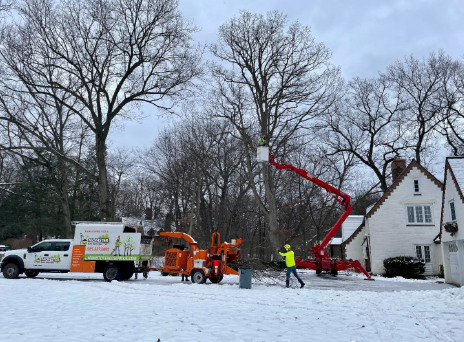
Our crew performing winter pruning on mature oaks in East
Rochester.
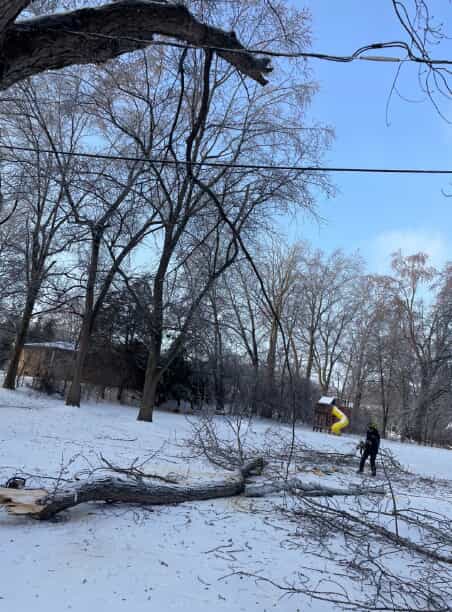
Wind and ice contributed to limb failure on this silver maple. Our
team was called in to clean up the area and remove the
remainder of the damaged limb.
In the aftermath of severe winter weather, our team is trained to provide storm damage cleanup as well as take actions to make sure your tree(s) have the best possible chance to recover from the damage. This includes cleaning up tree debris on the ground and making corrective cuts to limbs in the air to optimize wound sealing. Leaving broken limbs on a tree can make it vulnerable to future damage and decay, as the wound can serve as an open avenue for pests and diseases to attack. By promptly addressing storm-related issues, we ensure the safety of our clients while protecting their trees, underscoring our dedication to exemplary tree care in all seasons.
Find out more:
Schedule a consultation with a Monster Arborist
Monster Newsletter: Pruning Fruit Trees
Tree Highlight
Eastern white pine (Pinus strobus)
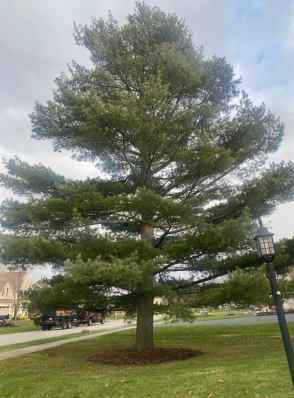
- Also called: White pine, Northern white pine, soft pine
- Lifespan: These pines can live 200 years or more!
- ID features: Height- They typically grow 60- 80 [some can reach over 100!] feet in height and 20-40 wide when mature.
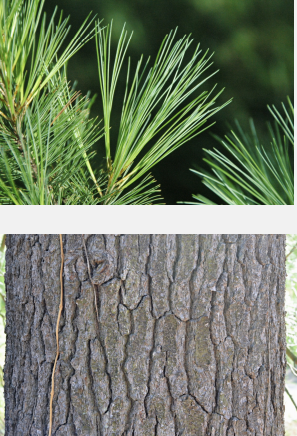
- Needles - Evergreen. These needles will be found in clusters of 5 [a helpful way to remember this is the word white has 5 letters]. Needles are 2-4 inches and are a green-blue hue. They are soft and pliable.
- Bark - When young, the bark will be greyish-brown and smooth. As tree ages, the bark becomes rougher and develops deep furrows.
- Cones - Cone are elongated and cylindrical, with a length of about 4 to 8 inches. When mature, they are brown in color and have a slightly woody texture.
- Fruit/Seed - Eastern white pines are gymnosperms, meaning they reproduce via cones. The cones of the Eastern white pine hold the tree's seeds, which are released when the cones mature and open.
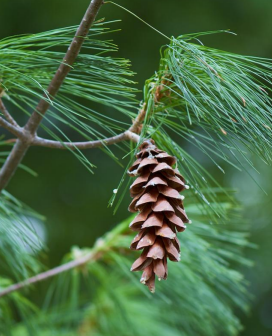
Need to know: This is a moderately durable tree but failure can occur under certain circumstances failures. Common cause for failure or decline are:
- Improper structure like codominate stems.
- Pest attack from borers, adelgid, and fungi.
- Root rot from wet and poorly drained soils.
- High winds or heavy ice/snow loads can cause limbs to snap
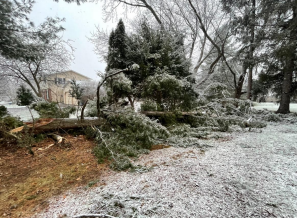
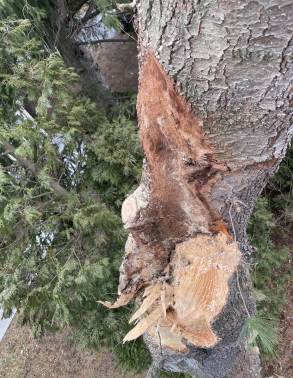
- Fun facts: They are the largest conifer tree in the Northeast.
- White pine wood is desirable lumber. It is used to make toys, boxes, furniture, cabinets, and more.
- They were often used for ship masts during the Colonia era because of their height and straightness.
ASK THE ARBORIST
Mike T.
[Big Mike]
Certified Treecare Safety
Professional [CTSP 05270]
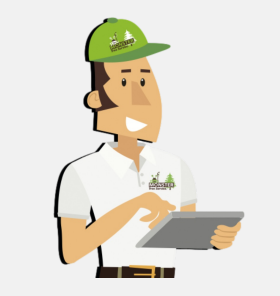
Q: How can you tell what is living or dead on a tree with no leaves in the winter?
A: This is a question we are asked a lot. Dead wood that has been there for a while often has some very obvious signs to the trained eye: bark sloughing off or noticeably discolored, an absence of smaller fine branching on larger diameter wood, certain fungi, or pines/firs without needles [are identifiable from a distance]. Other signs that require a closer inspection include: the presence (or lack thereof) of fresh buds prepped for new growth in the spring, dead branches that tend to break rather than flex if carefully bent.
Q: What are some challenges of pruning in winter?
A: Weather conditions are definitely the most difficult challenge. Snow and ice make trees slippery to climb and work in, often times requiring extra anchor and rigging points. Equipment access techniques often need to be modified to include snow removal and ground protection. We take extra steps to prevent property damage and to keep our arborist safe while working in slippery conditions.
MONSTER FUN
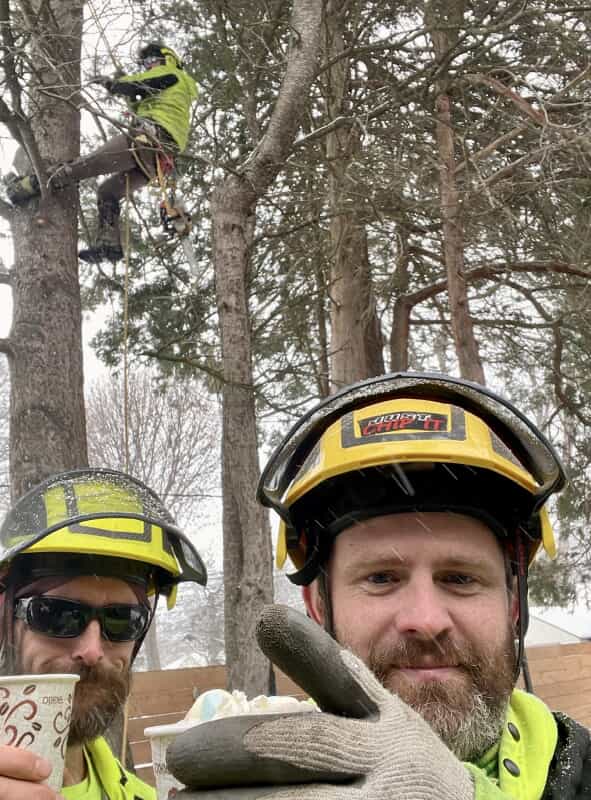
Brrrr! Winter tree work often means bundling up to battle the cold. Our crews take on the chill by layering up on extra frosty days, ensuring they stay warm and continue to deliver top-notch service. On one particularly chilly day, our spirits were warmed when our thoughtful clients surprised the crew with hot chocolate, complete with unicorn marshmallows! Don't worry, Kevin and Joe made sure Mike put a brief pause on the removal to enjoy his cup! Here's to teamwork and warming up in the winter! Cheers!
MONSTER IN THE NEIGHBORHOOD

Rochester Riverside Convention Center
Our Certified Arborists will be on site to discuss your tree care and plant health care needs.
- Saturday March 23, 2024 10:00 AM - 6:00 PM
- Sunday March 24, 2024 10:00 AM - 5:00 PM
